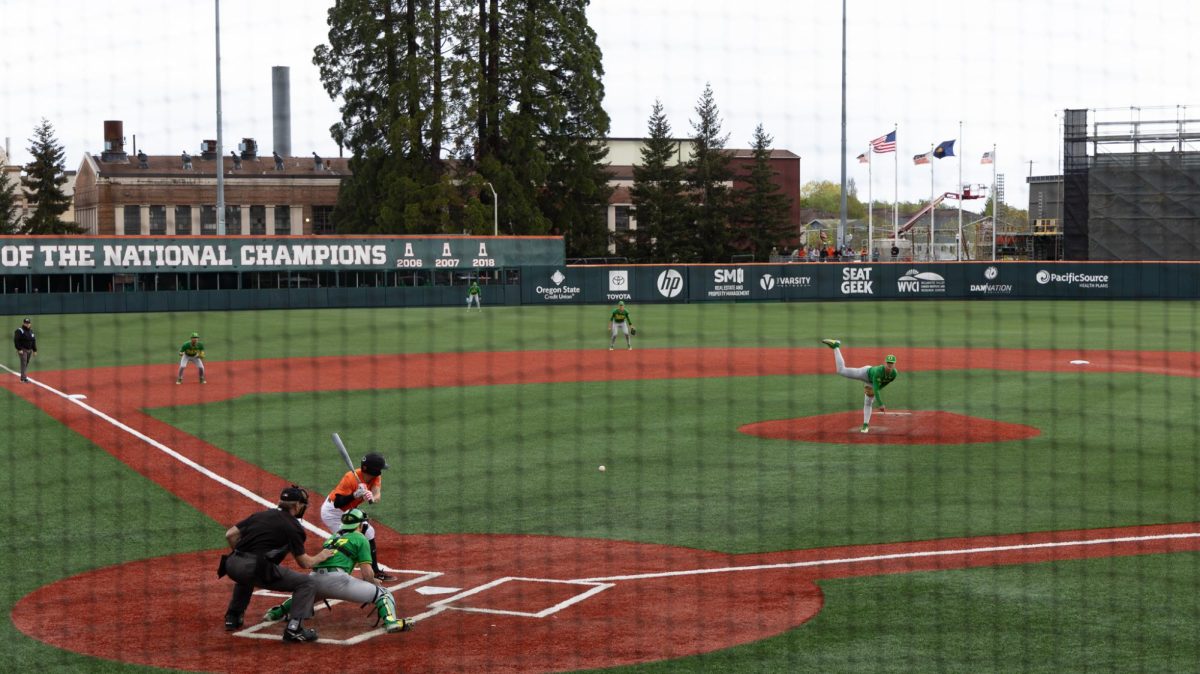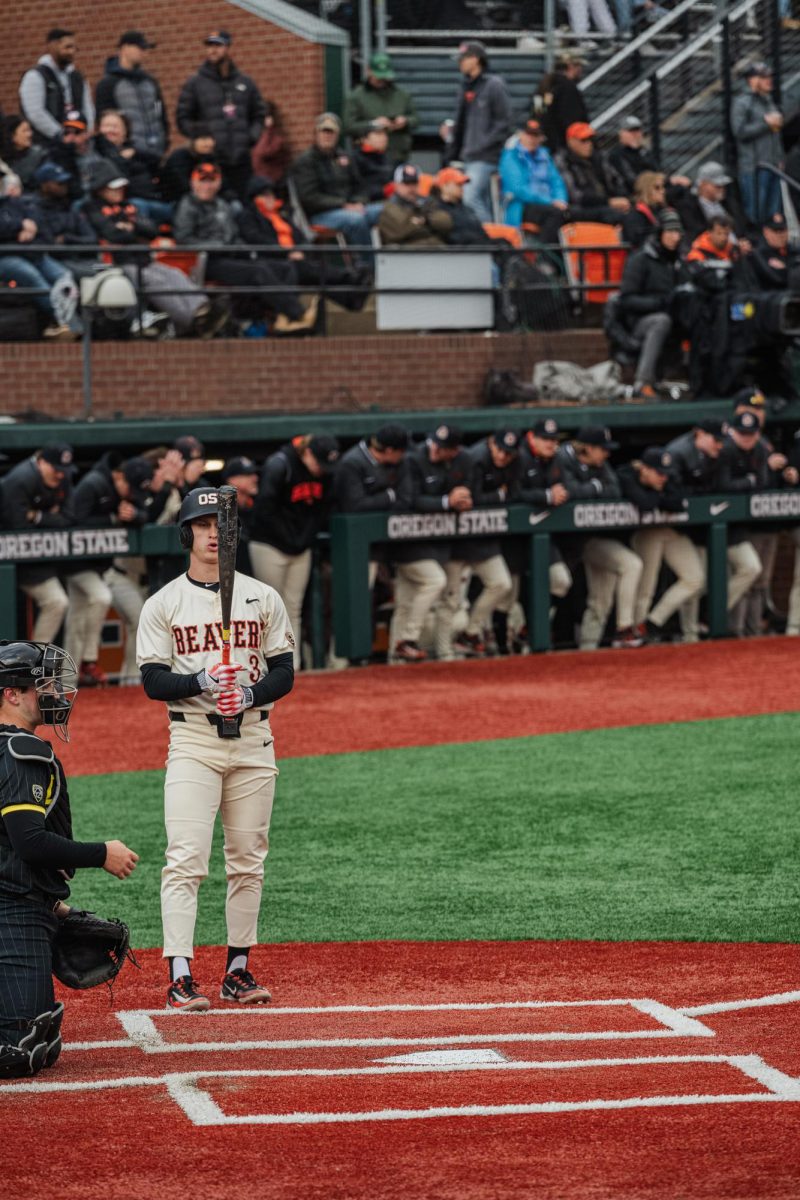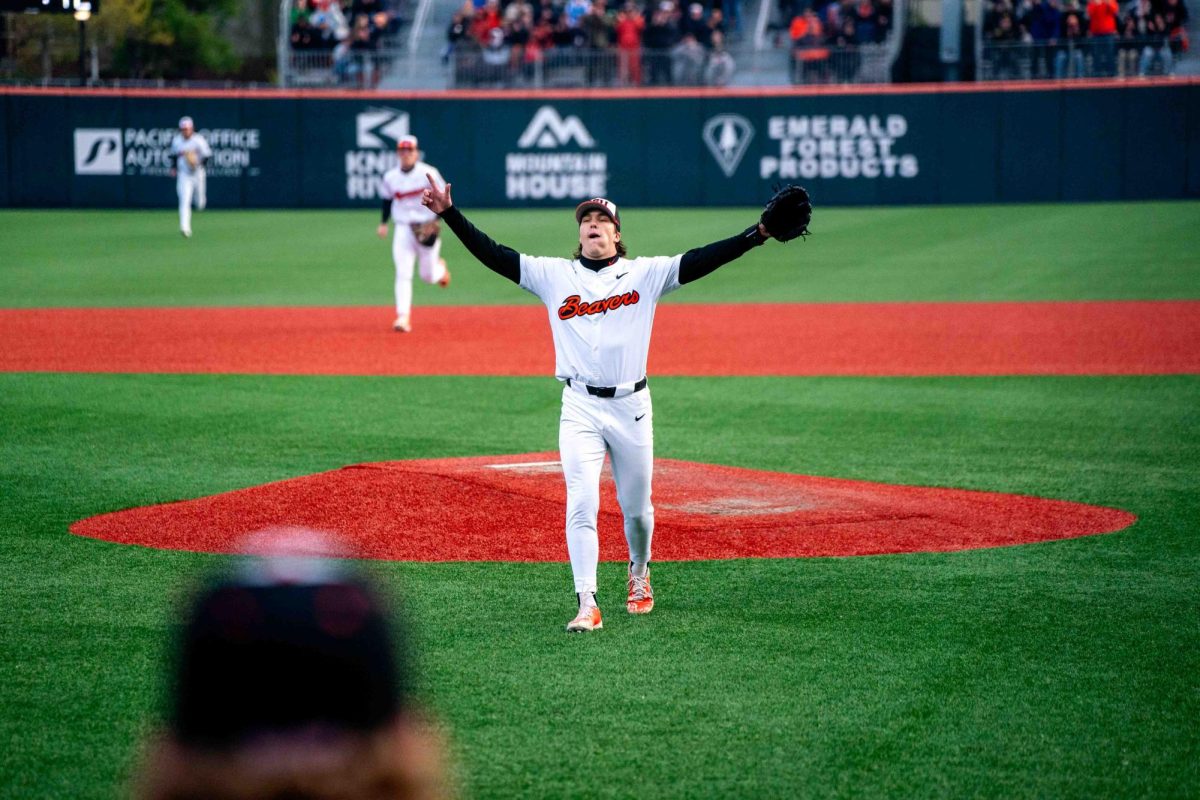In the first-floor hallway that runs past a cafe at the Gladys Valley Marine Studies Building in Newport, hangs a series of small, vibrantly-colored, and at first glance, unusual, paintings.
The exhibit is a part of a collaboration between Hatfield Marine Science Center and Patricia Valian Reser Center for the Creative Arts, and one of the first exhibitions for the initiative PRAx Unboxed. While the physical home of PRAx does not open until April 2024, staff members have already begun organizing exhibitions, such as this one at Hatfield, as well as hosting performances through this initiative.
The goal of PRAx, Curator of Visual Arts Ashley Meyers, said, is to integrate the perspectives of the arts and humanities into the scientific and technological initiatives that Oregon State University is known for.
“The collaboration between HMSC and PRAx is a new one that we hope can be a model for more cross-disciplinary conversations across campus,” Meyers said. “As curator at PRAx, I was invited to propose a few artists whose works are concerned with marine ecology, and who may be interested in engaging with an institution of marine science.”
The paintings, entitled the Kama’ehuakanaloa Series, were done by multidisciplinary artist Rebecca Rutstein. Rutstein’s main muse is the natural world surrounding us, largely collaborating with oceanographers.
“Artists and scientists – people think, ‘Oh, well, they’re so polar opposites,’’ Rutstein said. “But the experiences that I’ve had with scientists sort of corroborate another story, and that is that artists and scientists actually have a lot in common and share a lot of same interests in a way and are passionate about trying to understand the world around them.”
The Kama’ehuakanaloa Series were completed during Rutstien’s seventh residency as an Artist-at-Sea aboard the Research Vessel Kilo Moana.
During her time aboard the Kilo Moana, Rutstein worked alongside a team of scientists exploring changes in vent activity at the submarine volcano Kama’ehuakanaloa, 22 miles off the coast of the Big Island of Hawaii.
The scientists were studying the chemistry of the vent fluid and the life surrounding the volcano, sending remotely operated vehicles into the crater to study it up close.
“On the ship, I’m a little bit limited by scale and I have to bring all the supplies with me and I have to create a makeshift studio in a science lab,” Rutstien said. “I’m working side-by-side with the scientists and so there’s a lot of sort of hustle and bustle, watching (and) working with and seeing all the science happening, and participating in parts of it and then responding to certain things and gravitating to certain things.”
All of this – the photos of the microbes and detailed mappings of the crater – became inspiration for her paintings. As did life aboard the Kilo Moana.
“Oftentimes, I’ll pour paint and let the pitch and roll of the ship kind of disperse the fluids and allowing that to be sort of a moment in time that’s captured,” Rutstein said. “So (the paintings) are like little studies and capturing moments in time, capturing some of the research being conducted and telling a story.”
Working at the intersection of art and science, Rutstein hopes to bridge the gap between the two through her paintings and other works of art.
“I’m interested in creating connections, you know, between the viewer and the natural world and getting people to think more about these complexities that are kind of hidden from view that maybe they’re not aware of,” Rutstein said. “Art is a really wonderful way to communicate about science and about research and about climate change.”
Rutstein’s work will be on display at the Gladys Valley Marine Studies Building from 7:30 a.m. to 5 p.m. until Dec. 15. at 2030 SE Marine Science Dr., Newport, Ore., roughly 50 miles away from the main OSU campus. For those without a car, the Coast to Valley Express bus service provides regular trips to Newport and has a stop at Hatfield. The fee is $6.
“You have science – you can have really compelling data and science papers and charts, graphs, and it can be sort of numbing, you know,” Rutstein said. “It doesn’t communicate the way that maybe a piece of music might or work of art.”














































































































